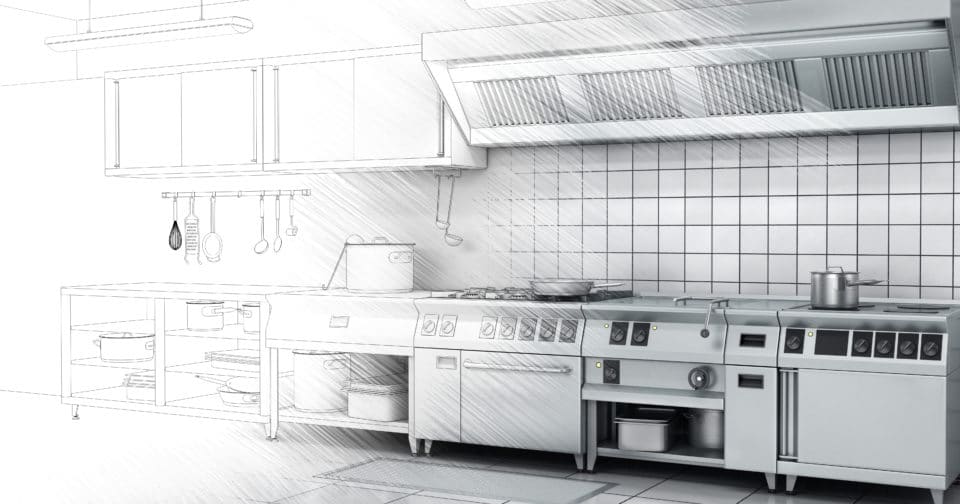
How is it that projects frequently fail to completely meet the designer’s intention in all respects and that there will nearly always be some disappointment in the resulting installation? Generally, they will be small details that fail to meet the original intent, but also, sometimes, a really disappointing outcome that we would rather forget, even if the client is happy.
Unlike product design where there is an opportunity to prototype ideas, the facilities designer, whether it be a building, a bridge or a professional kitchen only gets one go at getting it right first time. Certainly, chain restaurants and institutions may have the opportunity to try out concepts and test equipment, but the foodservice designer will be applying their previous experience as the only way of developing ideas and solutions: learning from each failure to achieve the design intent to improve the next design outcome.
Inadequate communication
There will be many reasons for these less-than-optimal results, but the main one will invariably be inadequate communication and clarity. Some of this may be as a result of the project delivery process which is out of the consultants control. But even so, recognizing, and maybe an admission, that lack of information and communication of the intent of the design to the project team was the reason why the result could have been better.
It may seem obvious to state that everyone interprets the information they receive, either verbally or visually in a different way. In the case of a creative mind, it will be imagining an alternative or how it relates to other ideas. In the case of a practical mind whether it makes sense and in the case of a design, how they might go about making it. In the case of a brand manufacturer, it will be how they can squeeze the information provided into what they produce; match the specified information into their product specification.
In all cases the clarity of the consultants design requirements will be the key to achieving the desired outcome. It is no good to blame a contractor or equipment supplier if all the requirements have not been fully identified. There will be a well thought out approach by the designer for selecting a particular system or item equipment based on their clear knowledge and understanding of the client’s requirements.
There may be a small number of unique features of the product or system that have influenced the selection. It will not therefore be sufficient just to specify the make and model of the product and expect the contractor or supplier to know what was in the designers mind when the selection was made. At best with only a brand, make and model called for, the consultant can expect no more than a close approximation of their desired item to be offered, generally on the basis of price.
To get it right the first time requires the essential reasons for the selection of the item to be clearly defined as the primary performance requirement of the specification with the brand, make and model being a guide, together with any desirable features, as supporting information. By clearly communicating the rational for all the requirements of the project design and where there is any potential for misinterpretation, providing detailed documentation, it will offer the best opportunity for achieving the desired outcome.
Use your experience
Even then there will be times when the information specified will be misinterpreted, either intentionally or accidentally. In either case the consultant will need to use the bid evaluation process and use their experience of the alternative brand to identify where it fails to meet the clearly specified requirements. The critical word here is “clearly” because if the communication of the requirements is not “clear” then the omission is the consultant’s and not the supplier’s.
With the design and delivery of foodservice projects being one of the most complex in most projects, there will inevitably be some elements of every completed project that could have been improved from the perspective of the experienced foodservice consultant. Indeed, if the designer thinks that a project is perfect: “Tell them they’re dreaming”.
From the design team perspective, it could be considered that every project is a prototype for the next one. And so, the process of evaluating the completed project to identify what worked and what didn’t will be essential to the continual improvement of outcomes. The evaluation will not only involve the performance of specified and correctly delivered equipment but also where the specification and procurement process has contributed to the desirable or less than desirable outcome.
As has been previously shown, everyone will interpret and filter even the most diligently specified requirement through their individual experience. And this can lead to realizing that there will always be the possibility of an entirely legitimate alternative interpretation. Whilst the formal documented specification will be the contractual instruction for the delivery of the project, communication of the requirements can be enhanced by providing bidders with a presentation similar to that provided to the client justifying the design in the first place. In this way, even acknowledging that each bidder will have a different take-away from the presentation, they will be fully informed and have no excuse that “they weren’t aware” and it will be the best opportunity to get it right the first time.
“Leaders should encourage experimentation and accept that there is nothing wrong with failure as long as it happens early and becomes a source of learning.”
Tim Brown, Change by Design, Harper Business
Tim Smallwood FFCSI
